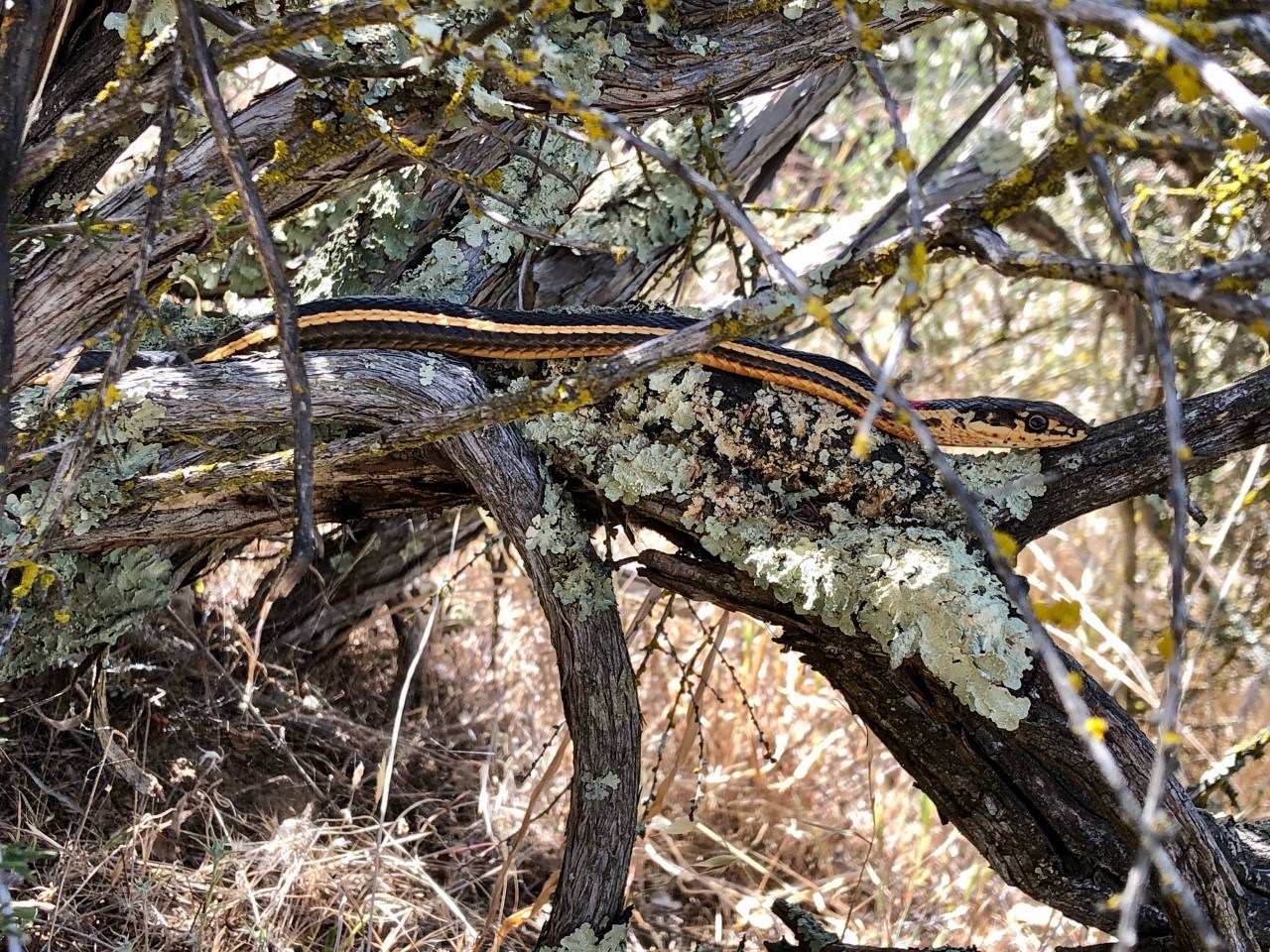Last updated: September 23, 2020
Article
Alameda Whipsnake: Monitoring Continues for Contra Costa County’s Speedster

NPS / Angel Sprague
August 2020 - As reported in February 2020, the natural resource management (NRM) team at John Muir National Historic Site continued its multi-year effort surveying for populations of the Alameda whipsnake. This federally threatened California whipsnake subspecies occurs within the park on Mt. Wanda. The NRM team surveyed under its new U.S. Fish and Wildlife Service recovery permit for Alameda whipsnakes.
Due to COVID-19 and shelter-in-place orders, the team delayed their trapping efforts between 14-21 days. They may have captured fewer whipsnakes as a result. Still, the team still encountered a familiar capture pattern. Since trapping efforts began in fall 2017, they captured 33 individual snakes: 26 males and seven females. This season, they captured seven new individuals: six males and one female. The skewed male to female ratio is likely because males travel throughout their home ranges to forage and find mates in spring and early summer. Meanwhile, females stay close to their hibernation sites where pairs mate. They only have a few days of peak activity in the spring when they are looking for suitable egg-laying sites. This can make their capture less frequent.

NPS / Soumya Suresh
As with previous seasons, the NRM team also continued trapping on the boundaries of a historic olive orchard. In this atypical habitat, they captured one Alameda whipsnake. In previous seasons, they captured a total of 11 individuals there, versus 21 in the more typical chaparral/coastal scrub habitat. In addition to the Alameda whipsnakes, the team captured 145 non-target animals. Forty-six reptiles and 99 rodents took advantage of the cozy quarters in the traps.
The John Muir NRM team will continue to monitor the Alameda whipsnake population during the upcoming fall trapping season. They expect to begin in mid-late September to take advantage of the snakes second peak activity period. These seasonal surveys are essential for tracking the active populations on Mt. Wanda. In addition, the park has recently grown to include the adjacent West Hills property. That could lead to the installation of new trap-sites in appropriate designated habitat. The team hopes this could build a more comprehensive idea of whipsnake population size and movement patterns. Such findings will aid public land managers as they work to protect threatened species on Mt. Wanda and West Hills.
For more information
- Contact John Muir Natural Resources Lead Angel Sprague or Natural Resources Program Manager Tori Seher
